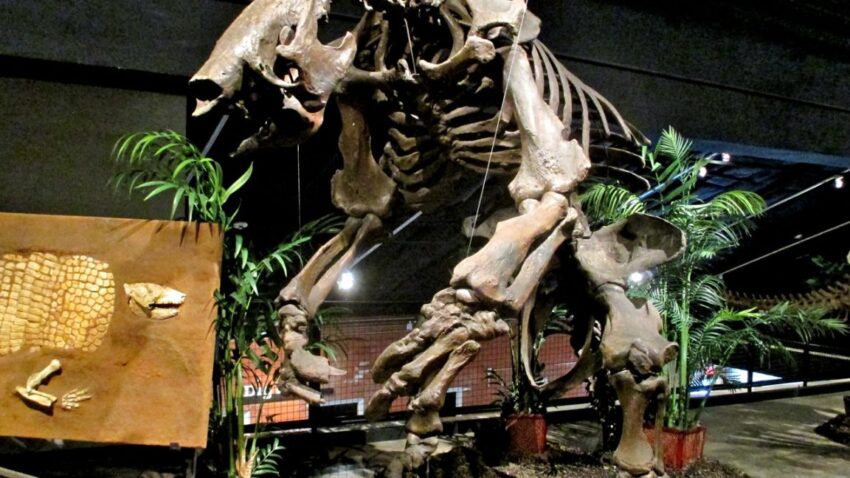
megafauna was the meat of choice for A recent study indicates that ancient South American hunters may have significantly contributed to the extinction of megafauna during the last Ice Age.
megafauna was the meat of choice for
Understanding the Extinction of Pleistocene Megafauna
The extinction of the Pleistocene megafauna has long been a topic of debate among scientists, with various theories attempting to explain the disappearance of these massive creatures. The prevailing hypotheses have included climate change and overhunting by humans. A recent study, however, provides compelling evidence that human activity played a crucial role in the extinction of these magnificent animals, particularly in South America.
The Study’s Methodology
Led by archaeologist Luciano Prates from Mexico’s National University of La Plata, the research team conducted a detailed analysis of animal bones found at 20 archaeological sites across modern-day Argentina, Chile, and Uruguay. These sites date back to the waning years of the last Ice Age, approximately 12,000 to 10,000 years ago. The researchers focused on the remains of extinct megafauna, which are defined as any animal weighing over 44 kilograms (about 97 pounds).
The team meticulously counted and categorized the bones, comparing the number of remains from extinct megafauna—such as giant sloths, giant armadillos, and elephant-like creatures—to those from smaller prey and still-living species like vicuñas. This comparative analysis aimed to determine whether these large animals were a significant part of the diet of Ice Age hunters in South America.
Key Findings
The results of the study revealed a striking preference for megafauna among ancient hunters. The data indicated that the remains of extinct species were far more prevalent than those of smaller animals, suggesting that these large creatures were not just occasional targets but rather staples in the diets of Pleistocene hunters.
- Giant Ground Sloths: These massive herbivores were likely a primary food source, as their bones were frequently found alongside human artifacts.
- Giant Armadillos: Another significant prey, these creatures provided substantial meat for early humans.
- Extinct Horse Species: Remains of these animals were also found, indicating they were hunted alongside other megafauna.
This evidence strongly supports the hypothesis that human hunting practices contributed to the decline and eventual extinction of these large animals. The findings align with similar studies conducted in North America, where overhunting is also believed to have played a role in the extinction of large mammals.
Contextualizing the Extinction Events
The extinction of megafauna during the Pleistocene epoch was a complex event influenced by multiple factors. While climate change undoubtedly altered habitats and food sources, the role of human hunters cannot be overlooked. As early humans migrated into new territories, they brought with them hunting techniques that may have been devastating to local wildlife populations.
In South America, the arrival of these hunters coincided with the decline of megafauna populations. The combination of hunting pressure and environmental changes likely created a perfect storm that led to the extinction of these species. The study by Prates and his colleagues adds a crucial piece to this puzzle, providing concrete evidence of human involvement in the decline of megafauna.
Implications for Modern Conservation
The implications of this study extend beyond understanding historical extinction events. It raises important questions about the relationship between humans and wildlife, particularly in the context of modern conservation efforts. As ecosystems continue to face pressures from human activity, understanding the historical precedents of species extinction can inform current strategies for biodiversity preservation.
Conservationists often grapple with the challenge of balancing human needs with the protection of wildlife. The findings from this study highlight the potential consequences of overexploitation and the importance of sustainable hunting practices. By learning from the past, modern societies can work towards more effective conservation strategies that prioritize the health of ecosystems while also considering human livelihoods.
Reactions from the Scientific Community
The study has garnered attention from various sectors of the scientific community. Many researchers have lauded the work for its rigorous methodology and significant findings, while others have expressed caution regarding the interpretation of the data.
Some experts emphasize the need for further research to fully understand the dynamics of human-animal interactions during the Pleistocene. They argue that while the evidence suggests a preference for megafauna, it does not definitively prove that hunting was the sole cause of extinction. Other factors, such as disease and habitat loss, may have also played critical roles.
Future Research Directions
As the debate continues, future research will be essential in unraveling the complexities of Pleistocene extinctions. Archaeologists and paleontologists may focus on several key areas:
- Expanded Geographic Studies: Investigating other regions where megafauna existed could provide a more comprehensive understanding of extinction patterns.
- Technological Advancements: Utilizing new technologies, such as DNA analysis and isotopic studies, may yield additional insights into the diets and behaviors of ancient populations.
- Interdisciplinary Approaches: Collaborations between archaeologists, ecologists, and climate scientists could lead to a more holistic understanding of the factors influencing megafauna extinction.
Conclusion
The study led by Luciano Prates and his team offers compelling evidence that ancient South American hunters played a significant role in the extinction of megafauna during the last Ice Age. By analyzing animal bones from archaeological sites, the researchers demonstrated a clear preference for large prey, suggesting that these animals were staples in the diets of early humans.
As the scientific community continues to explore the complexities of extinction events, the findings of this study serve as a reminder of the intricate relationship between humans and the natural world. Understanding this relationship is crucial not only for interpreting past events but also for informing modern conservation efforts aimed at preserving biodiversity in an increasingly human-dominated landscape.
Source: Original report
Was this helpful?
Last Modified: October 2, 2025 at 4:40 am
4 views















